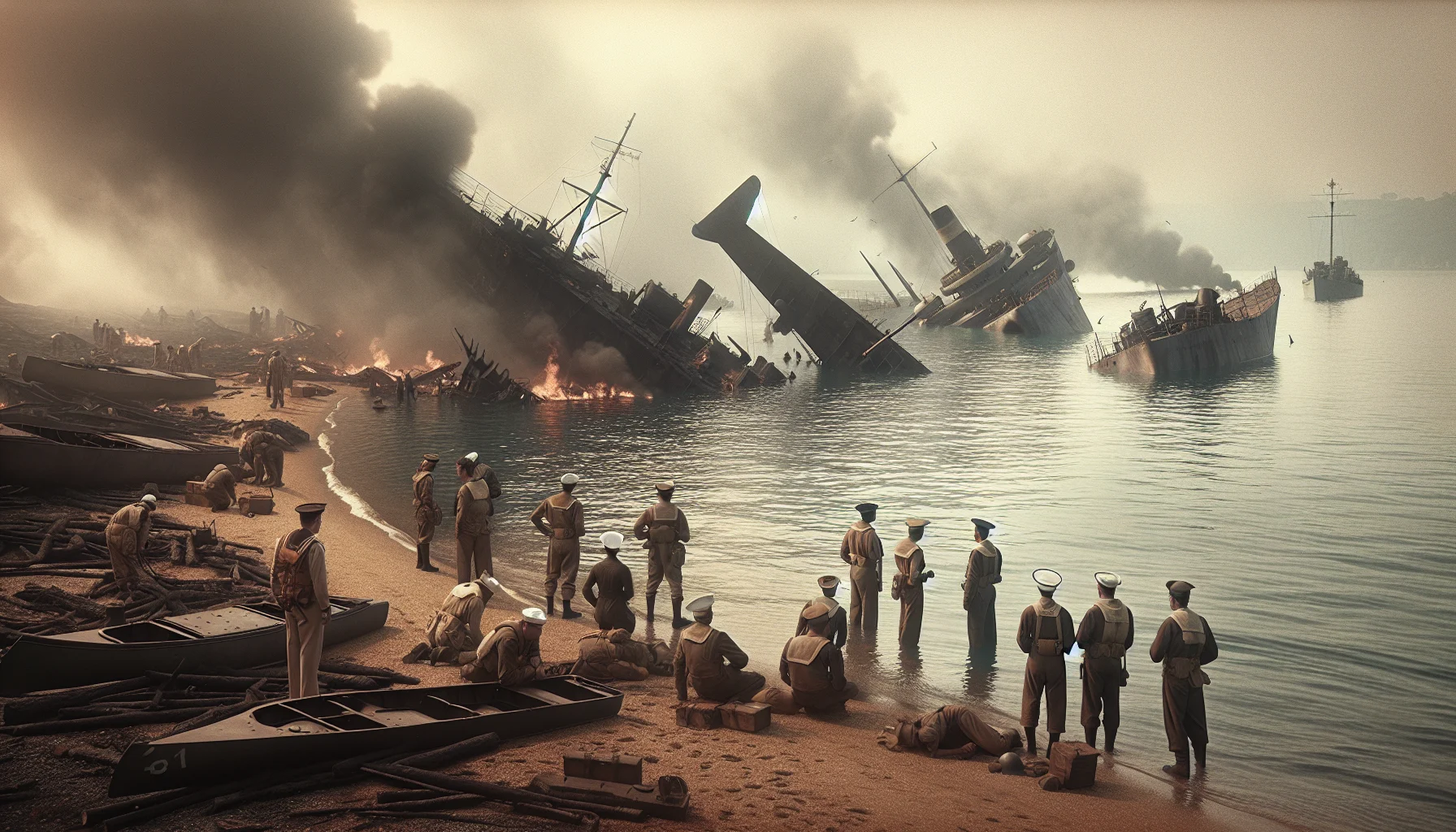
West Loch Disaster
by: The Calamity Calendar Team
May 21, 1944
A Sunday Like No Other
It was a routine Sunday afternoon on May 21, 1944, at West Loch, the quieter anchorage in Pearl Harbor, Hawaii. Nestled between sun-drenched hills and tranquil waters, the loch was far removed from the chaos that had engulfed the more famous parts of Pearl Harbor just over two years earlier. Yet, for those stationed there amidst the war's urgent logistical dance, the tranquility was deceptive.
At the heart of the loch, a cluster of Landing Ships, Tank — or LSTs — bobbed gently. These vessels, heavy with ammunition and anticipation for Operation Forager, the upcoming assault on the Mariana Islands, were essential players in an immense wartime orchestra. But in the frenetic pace of preparation, danger lurked inconspicuously amid the orderliness.
The Silent Ticking of Tensions
Pearl Harbor in 1944 was a hive of military precision channeled through tireless human effort. LSTs and support ships huddled at West Loch in a rhythmic dance, each waiting its turn to be loaded with supplies destined for the Pacific Theatre's distant battlefronts. The tension was not just palpable; it was meticulously calculated fuel running through the veins of a military behemoth on the move.
In the shadows of these preparations, a single moment of heedlessness was all it took for disaster to ignite. Aboard LST-353, the air hung thick with the scent of oil and gunpowder; the latter, a powder keg with a short fuse.
Explosion and Flame
At 3:08 p.m., the somber silence of the afternoon was shattered. Whether through a fumbled mortar round or another catalyst still debated, a flash and deafening roar signaled the beginning of one of the most devastating sequences in World War II's naval chronicles.
Fire clung fiercely to LST-353, leaping hungrily from vessel to vessel as if drawn by some malign force. Pandemonium ensued as explosions erupted in staggering succession, reshaping the scene into a hellish tableau of smoke and flames. On board, the crew fought desperately against the consuming fire, their cries lost in the cacophony of detonation after fiery detonation.
Thanks for subscribing!
The Human Cost
For the men stationed at West Loch, the minutes that followed stretched into an eternity. The frantic struggle against the inferno saw bravery and tragedy entwined — sailors and marines scrambling to stem the blaze and save comrades even as throbbing explosions shook the earth beneath their feet.
When the smoke began to clear, the grim tally of sacrifice was revealed: 163 lives lost, 396 wounded. Among the debris lay the scorched hulls of six LSTs, obliterated or beyond salvage, victim not only to the enemy fire but to the perilous nature of war itself.
Picking Up the Pieces
The immediate aftermath was one of bleak resolve. With battle and duty still pressing upon them, naval personnel turned to the necessary tasks of salvage and recovery. Burnt, twisted metal was hauled ashore; the waters cleared of debris as quickly as possible given the urgency of their mission. The strategic march towards the Marianas could not pause for reflection, even as the grim shadow of loss lingered.
Naval inquiries followed, shrouded in the necessity of wartime secrecy, leaving the broader public largely unaware of what had transpired in that isolated corner of the Pacific. It would be years before the full scope of the West Loch disaster permeated the public consciousness, constrained as it was by the fog of war and classified documents.
Course Correction
Despite the secrecy, lessons were learned. Enhanced safety protocols concerning munitions and their handling became a top military priority. The logistics protocols received a thorough reevaluation, ensuring that no potential threat went unaddressed in future operations. These changes were vital, not just for strategic success but to honor those who had perished within West Loch's infernal blaze.
The Legacy of Silence
The West Loch Disaster, though oft eclipsed by the events of December 7, 1941, remains a poignant reminder of the volatile unpredictability in war’s theater. Present-day revelations, pieced together as documents were declassified over time, have begun to etch this incident more indelibly into the annals of history.
Some narratives take decades to surface, but when they do, they enrich the collective memory, ensuring lessons are not just learned but internalized. For some, the West Loch Disaster is simply an echo of a world once ablaze. For others, it is a somber testimony to the resilience and the frailty of those who placed life on the line beneath the unyielding Pacific sun.
A Closing Reflection
Today, standing at West Loch, where once fury reigned, the history that unfolded here whispers through the gentle rustle of leaves and the now-calmer waters. It is a reminder, stark yet important, of the thin line between order and chaos in the tapestry of human endeavor, forever teaching us in the language of quiet shadows and solemn waves.
Stay in the Loop!
Become a Calamity Insider and get exclusive Calamity Calendar updates delivered straight to your inbox.
Thanks! You're now subscribed.